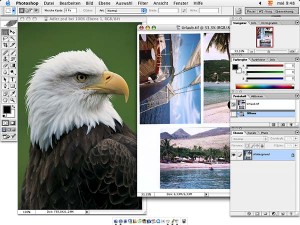
 Desktop Publishing is a modern printing process that uses personal computers and design software to create and edit layouts for producing all kinds of materials, including: logos, books, magazines, brochures, flyers, and newsletters.
Desktop Publishing is a modern printing process that uses personal computers and design software to create and edit layouts for producing all kinds of materials, including: logos, books, magazines, brochures, flyers, and newsletters.
Desktop Publishing allows computer users to have access to traditional printing processes. Although this electronic medium offers personal computer users greater access to creating printed materials, there is still a need to understand the importance of applying basic design fundamentals such as space, texture, color, line elements, balance and rhythm to a design layout.
Each technological innovation attempts to improve upon existing technologies and processes. It is important to understand the origin of terminologies and protocols in desktop publishing to better appreciate their significance. Though the modern personal computer allows an individual to produce printed materials, the quality of that product will depend on an understanding of the elements and principle of design
product will depend on an understanding of the elements and principle of design
Different types of desktop publishing software are available. Programs such as Photoshop, Illustrator, Indesign and Flash are just some of the tools that are used in the Desktop Publishing programs at Point Park University in its IMC program (IMC 306 & 315). This high-end software for professional and high-volume use is used by freelance graphic designers, corporations, print shops, graphic design firms. Despite the different types of software, different types of documents created, and where the software is used, all these fall under the wings of desktop publishing.